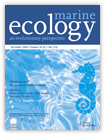Foliose Dictyoceratida of the Australian Great Barrier Reef III. Preliminary Electrophoretic Systematics
James A. Stoddart
Australian Institute of Marine Science, PMB 3, Townsville Qld 4810, Australia
*Conservation and Land Management, P.O. Box 51, Wanneroo, W.A. 6065, Western Australia
Search for more papers by this authorJames A. Stoddart
Australian Institute of Marine Science, PMB 3, Townsville Qld 4810, Australia
*Conservation and Land Management, P.O. Box 51, Wanneroo, W.A. 6065, Western Australia
Search for more papers by this authorAbstract
Abstract. Techniques of starch-gel electrophoresis were applied in a taxonomic assessment of a difficult group of dictyoceratid sponges. A phylogenetic tree derived from the resultant electrophoretic characters agreed well with a recent taxonomic revision of this group produced in a companion study. However, this must be seen as a preliminary result, as the electrophoretic character set was restricted to only three enzyme systems due to the extensive effects of a nonspecific enzyme which precluded the effective interpretation of most other enzymes assayed. This non-specific enzyme may be linked to a highly developed relationship between this group of sponges and symbiotic cyanobacteria.
References
- Avise, J. C., 1974: Systematic value of electrophoretic data. Syst. Zool., 23: 465–481.
- Banaszak, L. J. & R. H. Bradshaw, 1975: Malate dehydrogenase. In: P. D. Boyer, (Ed.), The Enzymes, 3rd Ed., Vol. 11. Academic Press, New York : 369–396.
- Bergquist, P. R., 1978: Sponges. Hutchinson, London ; 268 pp.
- Bergquist, P. R., 1980: A revision of the supraspecific classification of the orders Dictyoceratida. Dendroceratida and Verongida (Class Demospongiae). N.Z.J. Zool., 7: 443–503.
- Bergquist, P. R., A. M. Ayling & C. R. Wilkinson, 1988: Foliose Dictyoceratida of the Australian Great Barrier Reef. I. Taxonomy and phylogenetic relationships. P.S.Z.N. I: Marine Ecology, 9 (4): 291–319.
-
Bergquist, P. R. &
R. J. Wells, 1983: Chemotaxonomy of the Porifera: The development and current status of the field. In: P. J. Scheuer, (Ed.), Marine natural products, Vol. 5. Academic Press,
New York
: 1–50.
10.1016/B978-0-12-624005-4.50008-2 Google Scholar
- Curtis, A.S.G., J. Kerr & N. Knowlton, 1982: Graft rejection in sponges: genetic structure of accepting and rejecting populations. Transplantation. 33: 127–133.
-
Farris, J. S., 1971: The hypothesis of nonspecificity and taxonomic congruence.
Annu. Rev. Ecol. Syst., 2: 277–302.
10.1146/annurev.es.02.110171.001425 Google Scholar
- Farris, J. S., 1983: The logical basis of phylogenetic analysis. In: N. I. Platnick & V. A. Funk, (Eds.), Advances in cladistics. Vol.2, Proceedings of the Willi Hennig Society. Columbia Univ. Press, New York : 7–36.
- Felsenstein, J., 1983: Parsimony in systematics: Biological and statistical issues. Annu. Rev. Ecol. Syst., 4: 313–333.
- Heyward, A. J. & J. A. Stoddart, 1985: Genetic structure of two species of Montipora on a patch reef: conflicting results from electrophoresis and histocompatibility. Mar. Biol., 85: 117–121.
- Johnson, G. B., 1974: Enzyme polymorphism and metabolism. Science, 184: 28–37.
- Levi, C., 1956: Étude des Halisarca de Roscoff. Embryologie et systematique des Demosponges. Arch. Zool. Exp. Gen., 93: 1–181.
- Levi, C., 1973: Systematique de la classe de Demospongariae (Demosponges). In: P.-P. Grasse, (Ed.), Traité de zoologie. Vol. 3, Spongiaires. Mason et Cie, Paris : 37–631.
- Mayr, E., 1963: Animal species and evolution. Belknap Press, Harvard University Press, Cambridge , Mass : 797 pp.
- Neigel, J. E. & G. P. Schmahl, 1984: Phenotypic variation within histocompatibility-defined clones of marine sponges. Science, 224: 413–415.
- Nichols, E. A. & F. H. Ruddle, 1973: A review of enzyme polymorphism, linkage and electrophoretic conditions for mouse somatic cell hybrids in starch gels. J. Histochem. Cytochem., 21: 1066–1081.
- Richardson, B. J., P. R. Baverstock & M. Adams, 1986: Allozyme electrophoresis. Academic Press, Sydney ; 420 pp.
- Selander, R. K., M. H. Smith, S. Y. Yang, W. E. Johnson & J. B. Gentry, 1971: Biochemical polymorphisms and systematics in the genus Peromyscus. I. Variation in the old-field mouse (Peromyscus polionotus). Univ. Texas Publ.,, 7103: 49–90.
- Simpson, T., 1969: The structure and function of sponge cells: New criteria for the taxonomy of poecilosclerid sponges (Demospongiae). Bull. Peabody Mus. Nat. Hist., Yale, 25: 1–141.
- Sneath, P.H.A. & R. R. Sokal, 1973: Numerical taxonomy. W. H. Freeman & Co., San Francisco ; 573 pp.
- Sole-Cava, A. M. & J. P. Thorpe, 1986: Genetic differentiation between morphotypes of the marine sponge Suberites ficus (Demospongiae:Hadromeridae). Mar. Biol., 93: 247–253.
-
Sole-Cava, A. M., 1987: The use of electrophoresis in sponge taxonomy. In: J. Vacelet &
N. Boury-Esnault, (Eds.).
Taxonomy of Porifera from the NE Atlantic and Mediterranean Sea. NATO ASI Series, Springer-Verlag G13: 243–258.
10.1007/978-3-642-70892-3_12 Google Scholar
- Sokal, R. R., 1983: A phylogenetic analysis of the caminalcules. II. Estimating the true cladogram. Syst. Zool., 32: 185–201.
- Stoddart, J. A., 1983: Asexual production of planulae in the reef coral Pocillopora damicornis. Mar. Biol.,, 76: 279–284.
- Stoddart, J. A., P. T. Murphy, P. R. Bergquist & E. A. Evans, 1987: Environmentally induced variation in diterpene composition of the marine sponge Rhopaloeides odorable. Biochem. Syst. Ecol.,, 15: 595–606.
- Urbaneja, M. & A. L. Lin, 1981: A preliminary study on the isoenzyme patterns and taxonomy of tropical sponges. Comp. Biochem. Physiol., 70B: 367–373.
- Wilkinson, C. R., 1983a: Net primary productivity in coral reef sponges. Science, 219: 410–412.
- Wilkinson, C. R., 1983b: Phylogeny of bacterial and cyanobacterial symbionts in marine sponges. In: W. Schwemmler & H. E. A. Schenk, (Eds.), Endocytobiology. Vol. II. Walter de Gruyter, Berlin : 993–1002.
- Wilkinson, C. R., 1984: Immunological evidence for the Precambrian origin of bacterial symbioses in marine sponges. Proc. R. Soc. London, B220: 509–517.
- Wilkinson, C. R., 1988: Foliose Dictyoceratida of the Australian Great Barrier Reef. II. Ecology and distribution of these prevalent sponges. P.S.Z.N. I: Marine Ecology, 9 (4): 321–327.




